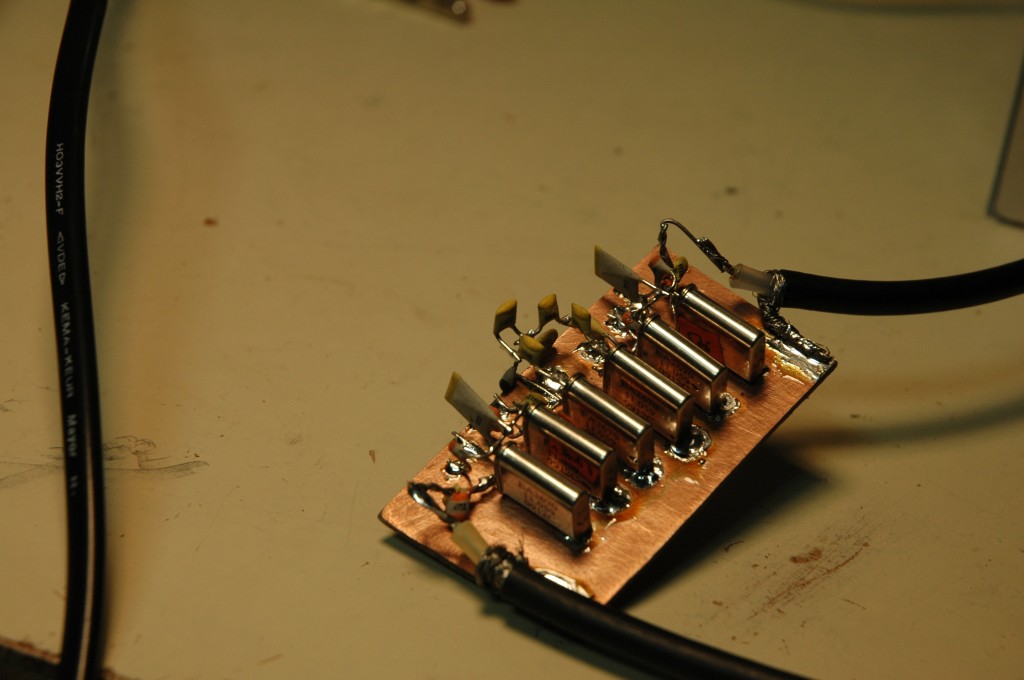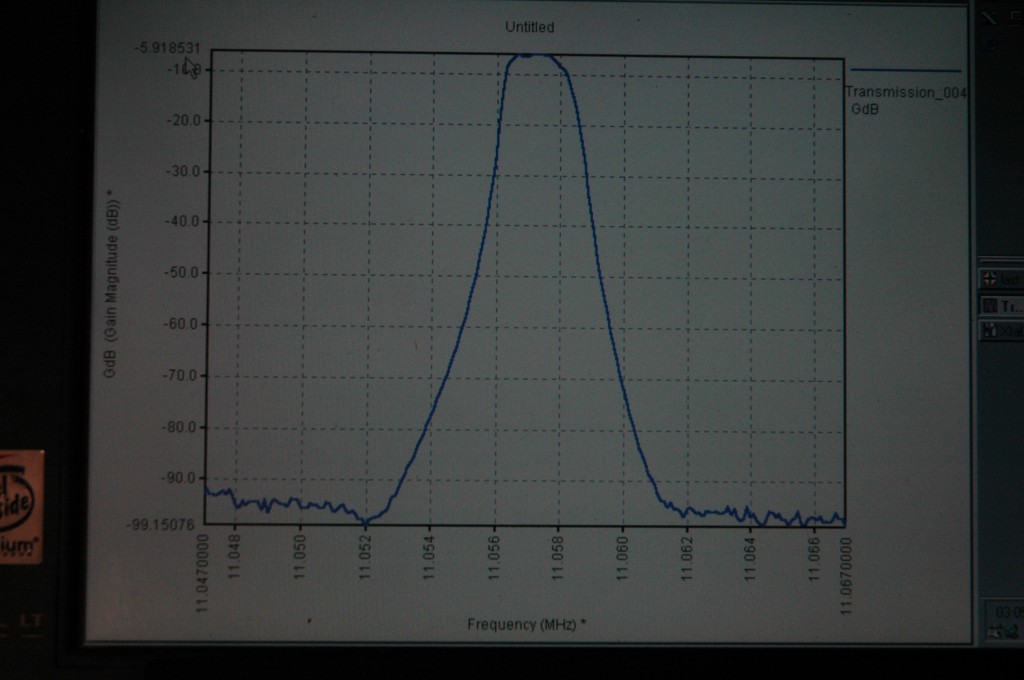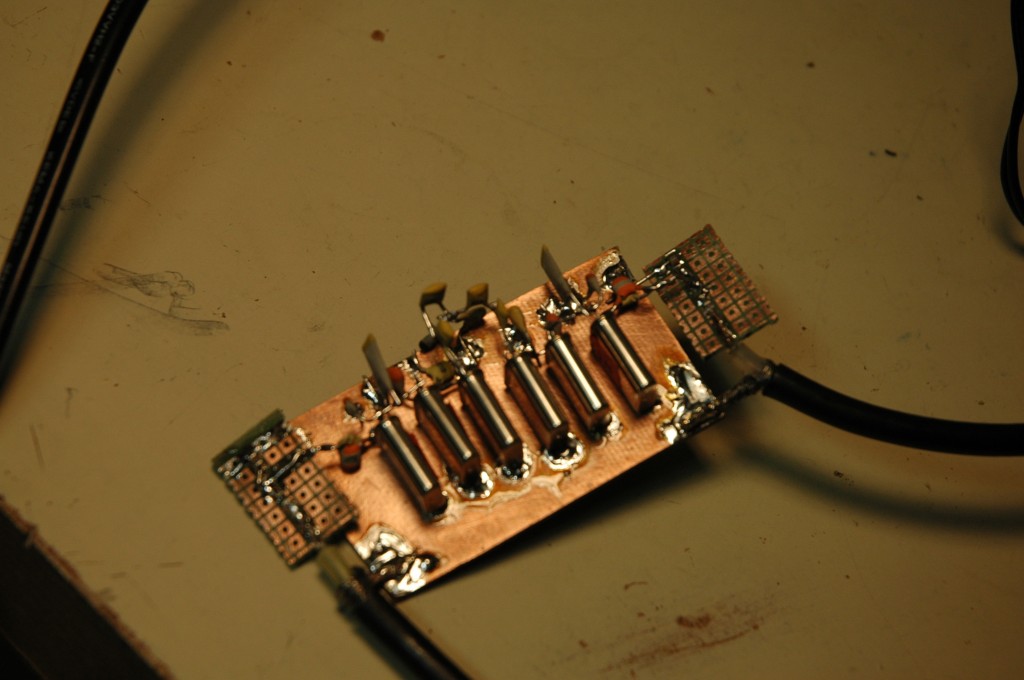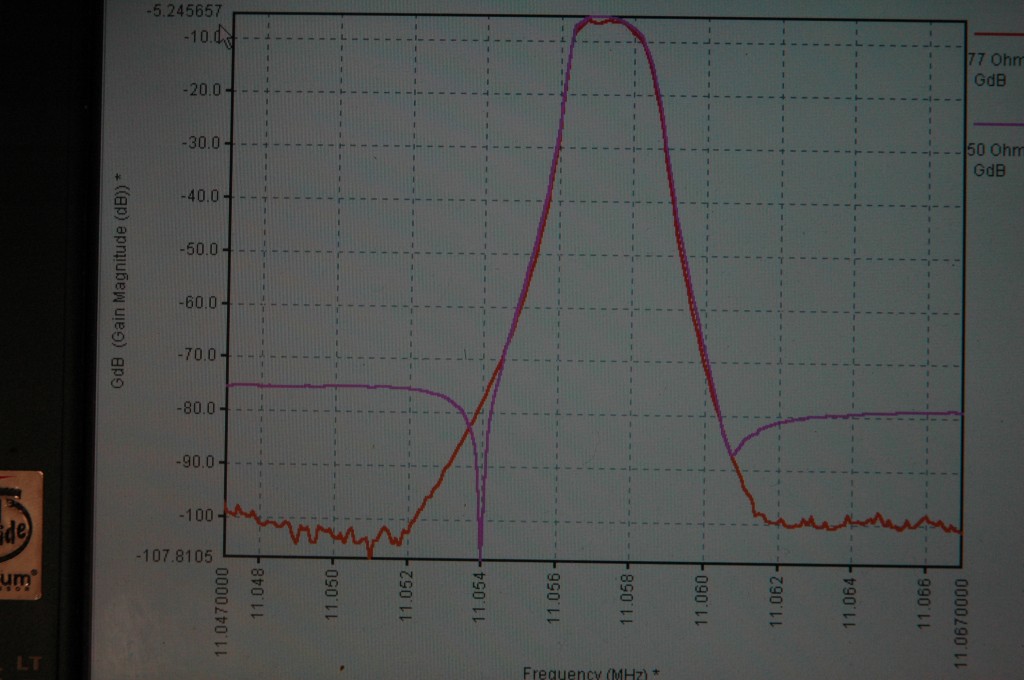A few weeks ago, I was given some hand-matched crystals at the radio club. My mission: to make a crystal filter for a Belthorn IF-module I’m going to build. Once again, something I’ve never done before. Let’s dive in with both feet.
To make a filter, there exist many software packages. I used Dishal from dj6ev, a windows program that luckily runs just fine under wine on Linux.
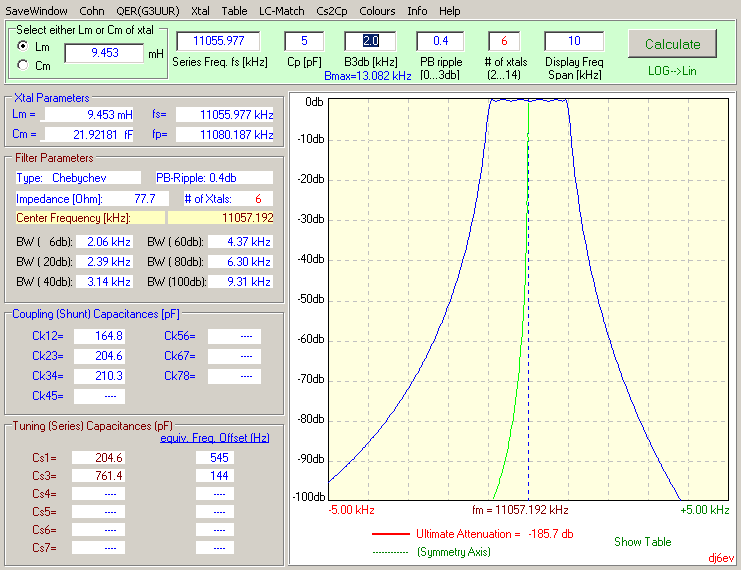
In the little bag of crystals, I had found a note with all the crystal parameters, so I didn’t need to measure them myself. I entered the average series frequency, Lm, Cp, number of crystals, and the desired passband bandwidth and ripple, and in a split second Dishal gave me all the capacitor values I needed. Then I played a bit with the bandwidth and ripple, trying to find a 50 Ohm impedance point, but couldn’t find it so I ended up with 77 Ohm. When I was done playing, I looked up the appropriate schematic in the appendix of the manual, and started building it on a piece of PCB.
To test the filter, I started my N2PK VNA and took a measurement. the result looks pretty good according to me:
The last step was adding an LC impedance matching circuit, as calculated by the Dishal software. I only have SMT inductors, so I soldered some 0805 components on a piece of perfboard and added it to the filter:
But when I measured the filter again, I didn’t expect the result. The stop-band attenuation went up from -100dB to -75dB! I have no explanation for this. Any input is welcomed!
Update: Thanks to Jacques ON7NP I now know that the two tuned circuits I use for impedance matching cause coupling between in-and output.
